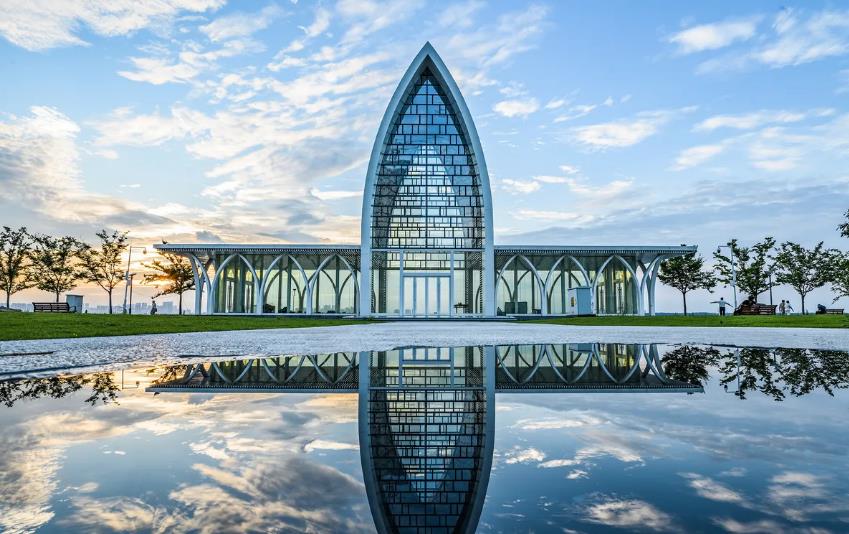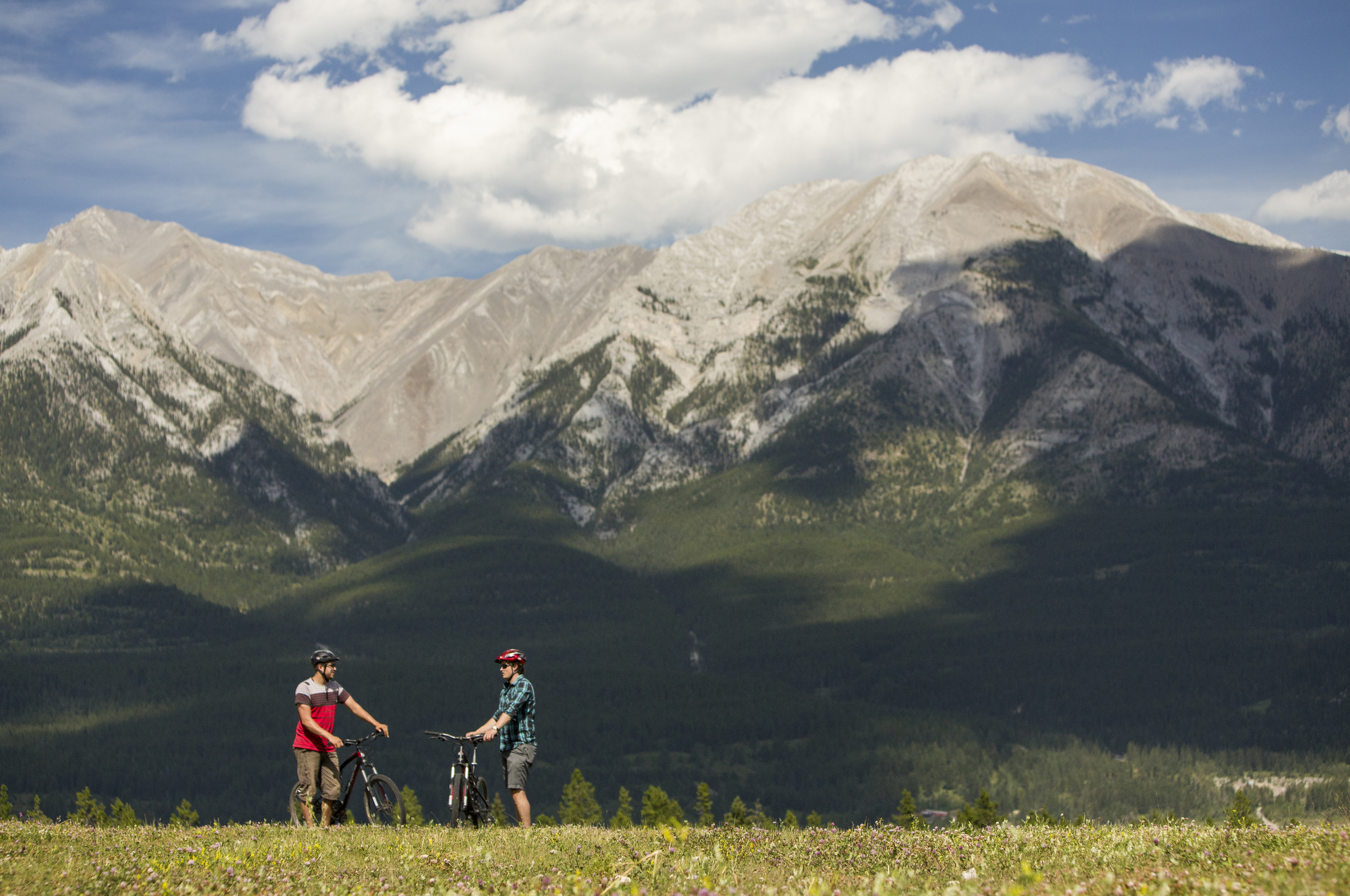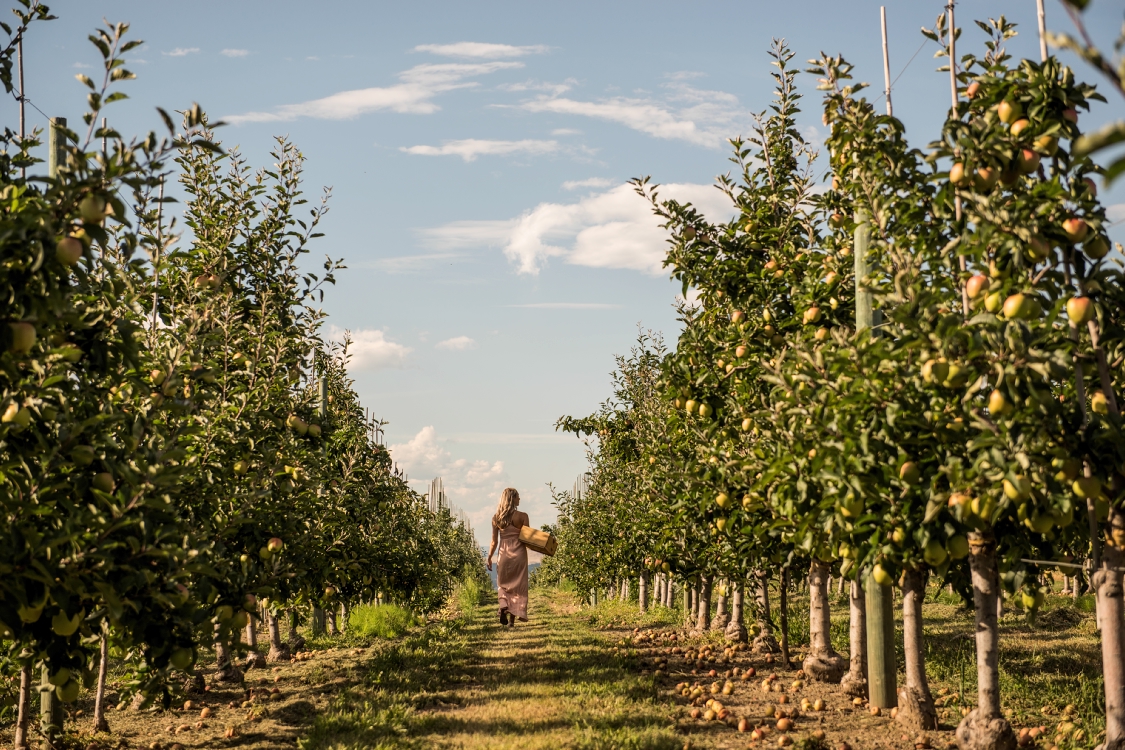https://nz.trip.com/moments/destination-lake-louise-1726/
2025 Lake Louise Travel Guide: Must-see attractions, popular food, hotels, transportation routes (updated in July)
Lake Louise的今日天氣
Clear 4-17℃

Lake Louise的熱門Attraction
Banff National Park
(142)Lake Louise
(107)Yoho National Park Of Canada
(47)Icefields Parkway
(18)All Trip Moments about Lake Louise
Chasing Glaciers and Dreams: My Unforgettable Lake Louise Adventure
🏞Lake Louise is truly a jewel of the Canadian Rockies — a place where turquoise waters meet towering mountain peaks in perfect harmony. During my recent trip, I had the chance to explore this stunning spot and embark on the iconic Plain of Six Glaciers hike, and it was nothing short of breathtaking😍 Starting at the famous Lake Louise lakeshore, the trail winds through lush forests and alpine meadows, gradually unveiling panoramic views of six majestic glaciers glistening in the distance. The hike offers the perfect balance of challenge and awe, with each step rewarding you with increasingly spectacular scenery. One of the highlights was reaching the cozy Plain of Six Glaciers Tea House — the perfect spot to relax, sip hot tea, and soak in the incredible views before heading back. The crisp mountain air, the serene blue lake, and the rugged glaciers made this adventure feel like stepping into a postcard. ❗️Make sure to bring cash! No other payments accepted❗️ The other beautiful spot on the way is Lake Agnes - a peaceful alpine lake known for its mirror-like surface. It’s one of those rare places that instantly calms you — a quiet beauty that feels almost sacred. If you’re craving a nature escape that fills your soul with wonder, Lake Louise and the Plain of Six Glaciers hike are absolute must-dos. Trust me, it’s an experience you’ll want to revisit in your dreams long after you leave. ➡️Tips:Remember to come early in the morning to secure a parking lot on Lake Louise. It's 40$ per car. ➡️Summer 2025 up to September 2nd - no extra charges to visit national parks of Canada. ➡️Have a cup of coffee with croissant at Fairmont hotel before the hike! ➡️Lots of people take photos right in front of the lake, but if you walk 100-200m, the view will be the same, but almost no people. #alberta #canada #lakelouiseAnastasia_travels3Calgary to Banff and Jasper | Private Chinese Small Group Tour
Summer is here, and the Rocky Mountains are about to showcase their most beautiful season. Banff National Park, Jasper National Park, and Yoho National Park each offer breathtaking scenery worth exploring. If you're looking to visit all three national parks in one trip, this private small group tour is the perfect choice. ❓【What is the Banff Private Small Group Tour?】 ✅ Group Size: Small groups of 2-6 people, with the option to form a private group 🏨 Hotel Options: Choose from a variety of hotel star ratings 🚘 Comfortable Transportation: Travel in a comfortable business vehicle for convenience 🚩 Chinese-Speaking Guide: Professional and attentive service with no language barriers 📝【Recommended Itinerary for the Banff Private Small Group Tour】 D1: Arrival in Calgary D2: Calgary → Johnston Canyon → Lake Minnewanka → Banff Town → Sulphur Mountain Gondola → Cascade Gardens → Surprise Corner → Banff Town D3: Banff Town → Bow Lake → Peyto Lake → Columbia Icefield → Jasper Town D4: Jasper Town → Maligne Canyon → Maligne Lake → Lake Louise → Fairmont Chateau Lake Louise → Banff Town D5: Banff Town → Castle Mountain → Moraine Lake → Yoho National Park → Emerald Lake → Calgary 👋【Why Choose This Itinerary?】 1️⃣ Iconic Destinations: In-depth exploration of Banff, Yoho, and Jasper National Parks 2️⃣ Thoughtful Services: Complimentary Calgary airport pickup for arrivals before 1:00 PM 3️⃣ Unique Experiences: Lake Minnewanka boat ride, Sulphur Mountain Gondola, and a visit to the iconic Fairmont Chateau Lake Louise 📸【Highlights of the Tour】 Banff National Park 👉 Banff Town: Visit Surprise Corner and ride the Sulphur Mountain Gondola for stunning views 👉 Famous Lakes: Explore Moraine Lake, Lake Louise, Lake Minnewanka, and Peyto Lake 👉 Special Activities: Options include a boat ride on the lakes or hiking Johnston Canyon to enjoy glacier lake views Yoho National Park 👉 Emerald Lake: A jade-colored lake reflecting the surrounding mountains 👉 Natural Bridge: A unique rock formation created by river erosion near Emerald Lake Jasper National Park 👉 Maligne Lake: The second-largest glacial lake in the world and a signature attraction of Jasper National Park 👉 Maligne Canyon: A classic karst canyon featuring cascading waterfalls and dramatic terrain Round-Trip from Calgary Join the Banff Private Small Group Tour Feel free to inquire for more details ❤️~北美旅行向导kaya6#DecemberT
#DecemberTravelSupportEvent Introducing two beautiful lakes in Banff, Canada. The first is Lake Moraine. I recommend taking a shuttle bus rather than a rental car. The emerald lake is truly breathtaking. The second is Lake Louise. Like Lake Moraine, I highly recommend taking a shuttle bus. It's incredibly large~ The water color is also so pretty^^ I definitely recommend you visit. #ViewRestaurants #Banff #LakeLouiskkdays3Lake Louise, Banff
Lake Louise Fairmont Château Lake Louise 🇨🇦About 2 hours by car from Calgary Arrived while looking at the powerful Rocky Mountains🏔️ The beautiful scenery and air are simply moving Lake Louise shows a different appearance in summer and winter It's one of the places I want to visit again soon! The hotel's cafe was open to non-guests too! 📍111 Lake Louise Dr, Lake Louise, AB T0L 1E0, Canada #Overseas travel #Canada #Banff #Banff National Park #Lake Louise #Calgary #Alberta 📍111 Lake Louise Dr, Lake Louise, AB T0L 1E0, Canada #Overseas travel record #lakelouiseeme113Lake Louise Travel Guide
Lake Louise is the most famous lake in Banff. The lake's water contains minerals from glacial runoff, giving it a clear blue-green color under the sunlight, earning it the nickname 'The Jewel of the Rockies.' When visiting Lake Louise, it is recommended to purchase a Banff National Park ticket in advance, with a daily ticket price of CAD 9.80 for adults. It is best to visit in the early morning or late evening when the light is soft, and the scenery is particularly beautiful. You can take a gondola to Whitehorn Mountain for a panoramic view of Lake Louise and the spectacular Victoria Glacier. Additionally, the Lake Agnes Trail is a great hiking route, passing by Mirror Lake and Bridal Veil Falls, offering stunning views along the way. For accommodation, it is recommended to stay at the Fairmont Chateau Lake Louise. The hotel has a long history, unique architectural style, and is located right by the lake with exquisite interior decor. For dining, the Lake Louise Station Restaurant is recommended, with a nostalgic theme and signature dishes like Station Photo Chicken Breast and Alberta Pork Chops.Calf963Lake Louise, Canada, the most dazzling pearl in the Rocky Mountains
#lake #100TravelWays Located in Canada's #BanffNationalPark, #LakeLouisPakeLouise has always been known as "the most dazzling pearl in the Rocky Mountains" and is an important attraction that must be visited when visiting Canada. During this self-driving trip to Canada, I made a special trip to see this beautiful glacial lake. The water of Lake Louise comes from the Victoria Glacier, which is injected by the melting ice in summer. The rich minerals in the glacier give the lake water a beautiful blue-green color. The closer to the glacier, the bluer the lake water is. When the weather is clear, you can also enjoy the mirror-like reflection. There is a trail along the lakeside of Lake Louise. Walking along the trail around the lake, you can not only avoid the crowds, but also enjoy the lake scenery from different angles. The most eye-catching thing on the lakeside is the castle-like five-star hotel Fairmont Château Lake Louise. It is very enjoyable to stay here for a night. #CanadaTravel #Lakes #100WaysToTravelMoutain8Lake Louise: A Sapphire in the Rockies, but the experience during peak season is 'the lake is beautiful, but there are too many people'
I am a travel blogger and global traveler, please follow me! (Published the 1744th original travel photo in 1012 cities across 57 countries/regions on 5 continents) Lake Louise is the main attraction of Banff National Park and the most well-known one. It takes just over an hour to drive from Banff town to get there. Lake Louise seems like an emerald dropped into the Rocky Mountains, stunningly beautiful. It is shielded by the graceful Victoria Glacier, with mountains and water complementing each other, like a perfect painting. The water of Lake Louise comes from the Victoria Glacier, making it clear and green, hence it is known as the 'Sapphire of the Rockies'. Since Victoria Mountain is located on the west side of Lake Louise, it is best to arrive before 8 am. First, it is said that the water surface sparkles at sunrise, like a fairyland. Second, there are few parking spaces in the scenic area, and if you arrive late, you will have to wait for a parking spot. Additionally, it is best to avoid the peak season in July and August. The experience of visiting Lake Louise during this time will be 'the lake is beautiful, but there are too many people'. It is difficult to squeeze to the lakeside, and it is crowded with people shoulder to shoulder. Taking a beautiful photo by the lake will be very difficult, and renting a boat to row on the lake will be a luxury.JamesonBrennan743Canada: Banff - Lake Part 3 -
This time, I will introduce the lakes that can be accessed from the city of Banff! It seems that you can also rent a car yourself, but the parking lot is so crowded that you can only get in if you have a tour bus or van... This time, I participated in an optional tour and got around efficiently 😌 I didn't use any filters on these photos, but aren't they amazing! ? ✨️ The weather was good, the color of the lake was beautiful, and I felt the nature inside, and it was a great experience 🌱 (I usually prefer to take pictures of buildings, but the scenery was so good that I had a lot of fun) Now, I will explain each photo 📷 [1st photo] Lake Louise The color is a little whiter than the others. There is a large hotel in front of it, so you can buy souvenirs there! [2nd photo] Moraine Lake You can see this lake from a place that looks like you have climbed a rocky mountain! The top was a little tough because of the slope of the rocks, but I remember it took less than 10 minutes to go from the bottom to the top, so if you have the stamina, please go up! The view from there is exceptional✨ [3rd photo] Emerald Lake I tried canoeing here! (It was the cheapest of the three lakes...lol) I don't think you'll often be able to experience canoeing on such a beautiful lake! And even though it's August, the water temperature is cold...! If you're going to try canoeing, be careful not to fall in🤭 [4th photo] Spiral Tunnel If you're lucky, you can see a long train with over 100 cars passing through here. When I went, I couldn't see the train, but the view was good! [5th photo] Takakkaw Falls It is said to be the second highest waterfall in Canada💧 That's why the water spray is so amazing! lol There were a lot of water droplets on the camera lens... But it was a dynamic and great experience! After the tour, we returned to the city around 6pm and headed to Calgary by bus! The highway bus from Banff to Calgary is a little far, so be careful... (I was having a leisurely dinner and the departure time was approaching, so I sprinted to the bus 😂In the end, it doesn't depart on time like in Japan, and it was delayed so I didn't need to run...) #canada #banff #overseastravel #summer #100travelstyless.k_traveler5Hidden Exploration - A spectacular self-driving trip through the Rocky Mountains
🌎When the hustle and bustle of the city gradually fades away, the Rocky Mountains, with their majestic posture, are quietly waiting for the arrival of every explorer. This self-driving trip through the Rocky Mountains is not only an ultimate pursuit of natural scenery, but also a profound exploration of the meaning of life. It takes you into the backbone of the North American continent and feels the charm of the majesty and mystery. ⭐️Route recommendations Calgary → Banff → Field → Golden → Grassier → Revelstoke → Kamloops → Abbotsford 🌼Daily schedule DAY1: Calgary Airport Pickup—Westover Campground—Yamnuska Wolf Dog Sanctuary DAY2: Ghost Lake State Park—McDougall Memorial United Church—Goodstone Rodeo Center DAY3: Heart Creek Bunker—Banff Gate Mountain Resort—Banff National Park—Caves and Basin National Historic Site DAY4: Emerald Lake—Bow Valley Parkway—Lake Louise Castle Hotel—Natural Bridge Falls DAY5: Finn Creek—Fed Lake—Golden Museum—Burgess James Gadsden Provincial Park DAY6: Stoney Creek Bridge – Mount McDonald DAY7: Rogers Pass Memorial Park—Sir Donald Mountain Campground DAY8: Revelstoke Mountain National Park—Revelstoke Town—Enchanted Forest DAY9: The final nail in the coffin—Kamloops DAY10: Bottle Top Bridge—Sikh Temple—Sandman Hotel Abbotsford Airport 🚩The self-driving mileage is about 1,000 kilometers, and the recommended travel time is 10 days. It is suitable for lovers of in-depth natural geography travel. 💖Overview of attractions ✔️Ghost Lake National Park: With rich wildlife and magnificent mountain scenery, it is one of the representative scenic spots in the Canadian Rockies. ✔️Banff National Park: As Canada's first national park, Banff is famous for its towering snow-capped mountains, clear lakes and rich wildlife. It is a paradise for nature lovers. ✔️Emerald Lake: The bottom of the lake is glacial moraine accumulated over hundreds of millions of years. The lake water will show different shades of turquoise under the sunlight, and is known as the "Emerald of the Rockies." Walking along the lakeside path, you can enjoy the continuous snow-capped mountains in the distance and the vigorous pines and cypresses nearby reflected in the rippling blue water of the lake. ✔️The town of Revelstoke: Known as one of the most beautiful winter tourist destinations on earth, it is surrounded by beautiful mountain peaks and has the largest altitude difference and longest descent in North America. The unique geographical location provides excellent natural conditions for snow sports for up to 6 months a year. ✔️Enchanted Forest: This fairy-tale land is full of magical buildings and interesting activities. Along the storybook-like paths in the park, you can experience challenging fun activities such as big rock walls and crossing nets. ✔️The last nail: As the site of the last nail before the completion of the construction of the Pacific Railway, this is a commemoration of a super project that has been recorded in Canadian history. But at the same time, for the Chinese, it is a period of blood and tears of our compatriots’ ancestors in a foreign country. historical witness ☀️Departing from Calgary, you will travel through Banff, Fields, Golden and many other exciting destinations. Along the way, you will have close contact with the majestic snow-capped mountains, clear lakes, magnificent waterfalls and abundant wildlife in the Rocky Mountains, and experience an unprecedented self-driving feast.Trip.com CarRental4Conquering the Big Bee Hive 🐝
Climbing the Big Beehive in Banff National Park was a journey of awe-inspiring vistas and personal triumph. The trail winded through dense forests, before finally opening up at the last hurdle where we were faced with a huge switchback. Trudging up slowly, step by step, my anticipation grew. Finally reaching the summit, I was greeted by a breathtaking panorama of Lake Louise and the famous Fairmont Château Lake Louise, nestled among towering mountains. The sense of accomplishment was overwhelming as I took in the beauty of the landscape stretching out before me. Sitting atop Big Beehive, I felt a profound connection to nature and a deep appreciation for the splendor of Banff National Park. It's a hike that challenges both body and mind but rewards with unmatched natural beauty. WinHKFlight #winhkflight I'm eager to explore Hong Kong's dynamic fusion of cultures and modernity, from its bustling malls and towering skyscrapers to its vibrant markets and delectable cuisine. International Financial Center, Ladies Market, Honolulu Cafe, I’m coming for ya!porkyhei5Lake Louise, Alberta, Canada
Lake Louise in Banff, Canada, is an absolutely breathtaking and stunning destination. During my visit in October, the beauty of the place left me speechless. What first struck me was the enchanting turquoise color of the lake enhanced by the morning sun. The early hours' tranquility created a serene atmosphere, making it the perfect time to experience the beauty of the lake. As the day progressed, the changing hues of the lake under the bright sunlight were a sight to behold. The turquoise waters surrounded by mountains and forests created an almost surreal, picturesque landscape. The morning's calm gave way to the gentle sounds of nature, adding to the overall charm of the place. Beyond the breathtaking lake, Lake Louise offers a variety of activities such as hiking, canoeing, and exploring the nearby Fairmont Chateau Lake Louise, a splendid hotel that complements the natural beauty of the area. The hiking trails around the lake are perfect for nature lovers and provide opportunities to immerse oneself in the captivating scenery. In summary, Lake Louise in Banff, Canada, is a must-visit location. The beautiful turquoise lake, the peaceful surroundings, and the ever-changing beauty of the landscape leave a lasting impression on those fortunate enough to experience it. I highly recommend visiting this natural wonder, as it is truly a place where one can be left breathless.Ayah Abdullah3Beautiful Lake Louise
Lake Louise in Canada is a famous tourist destination in Banff National Park in Alberta, 180 kilometers west of Calgary. It is named after Lake Louise. Lake Louise is surrounded by snow-capped mountains on three sides. The lake water is as green as emerald green and comes from the melted glaciers. There is a hotel in the area which is the sister of Banff Springs Hotel, the Chateau Lake Louise. It is easy to be amazed by the beauty of Lake Louise when traveling there because it is so beautiful. It feels like Lake Louise is a pearl hidden in the Rocky Mountains. Are you moved? Regarding Lake Louise, I can only say that it is beautiful, very beautiful, super beautiful, and invincible beauty. This American beauty is indescribable. Sitting by the lake and admiring the beauty of Lake Louise cannot be described in words. Viewing Lake Louise is simply picturesque. This lake, named after Princess Victoria, is not very large, about two kilometers long and only about five hundred meters wide. It doesn't take much time to walk around the lake. But there are still many people who linger, and it attracts a large number of tourists, and is known as the most beautiful lake in Canada. Mainly because it is deeper. , it is surrounded by mountains, and the snow on Mount Victoria never melts all year round. There is a piece of ice in the middle of the valley that never melts all year round. The ice flows into the valley and becomes clear lake water. I even think Lake Louise is a gem. Lake Louise is beautiful, with the mountains reflected in the lake. Under the sunlight, it emits different lights, sometimes green and sometimes blue. Coupled with the snow-covered mountains, the whole scenery is breathtaking. #familytravelshiow huey9Best View in Alberta
Lake Louise and Moraine Lake 🗺️ about a 2 hour drive from Calgary, Alberta 🚗 drove up to Banff national park but reserved the “Park & Go” shuttle which guarantees you a parking spot and transportation between the selected lakes. It costs about $11. Service ends around 7:30pm. Shuttle can be reserved online as it will typically sell out. 路易斯湖和梦莲湖 🗺️距离艾伯塔省卡尔加里约2小时车程 🚗 开车前往班夫国家公园,但预订了“Park & Go”班车,保证您有停车位以及所选湖泊之间的交通。费用约为 11 美元。服务于晚上 7:30 左右结束。班车可以在线预订,因为它通常会售完。 #travel #Canada #awesomepicSamantha Shamoon11Lake Louise Big Beehive trail
Lake Agnes with Big Beehive trail hike is a must when visiting Lake Louise national park. The view up Big Beehive is amazing. It encompass a full scenic view of lake Louise and mirror lake. It is about 4 hours hike with elevation of about 500m. Make sure to wear hiking shoes while attempting Big Beehive hike as the path is rocky and sandy. There is a tea house mid way in Lake Agnes. Bring cash while purchasing food theree.l.f.y3Fairmont Chateau Lake Louise, Canada
No matter where you are in Lake Louise, you can almost always see the Fairmont Chateau Lake Louise located on the east shore. It occupies the most prominent geographical location in Lake Louise and has become a must-visit place for almost all tourists visiting Lake Louise. Even if you do not stay in this hotel, especially Chinese tour groups, they will arrange to visit or shop inside. As a high-end hotel, the Chateau Lake Louise has a very low cost-performance ratio. I stayed in a lake view king room with windows facing the lake directly, which is also one of the best places to take pictures of the lake view. But the room is too small, only a pitiful 21 square meters, and the bathroom basin is also tiny. The hotel's public areas are quite good, with complete facilities and different activities. #OverseasTravel #Canada #CanadaTravel #5-starHotel #HotelIntroduction #FairmontHotel #BanffNationalPark #canadatravel #canada #lakelouise #hotel #fairmontchateaulakelouise玩转星球-Kevin55[Rocky Travel] Lake Louise
Hello!! This is Minju, the 2nd Trip.com Supporter~😀 If you go on a trip to Vancouver, the travel course I really want to recommend is the “Rocky Mountains” course! I would like to introduce you to “Lake Louise,” which was the most impressive during the Rocky Mountains tour. I went there in late October and early November, so the lake was already frozen. The frozen lake was really beautiful💖 #CanadaTravel #RockyMountains #LakeLouis #TravelSickness #TravelCourseRecommendation #Vancouver #RecreationTravel_democracy_traveling11Fairmont C
Fairmont Chateau Lake Louise offers many spectacular restaurant options, but our favourite is the afternoon tea. Each afternoon tea seating comprises of a number of delicious sandwiches, scones with jam and cream and an entire buffet of desserts. We were obsessed with the macaroons. The best part is that you get to enjoy the afternoon tea away from the crowds with incredible views of Lake Louise outside! #banff #canada #lakelouise #restaurantRobin Tuck15LAKE LOUIS
LAKE LOUIS CASTLE HOTEL-CANADA The Beautiful Fairmont Chateau Lake Louise Is Just Two Hours West Of Calgary* Off The Scenic Transcanada Hwy. Nestled On The Shores Of World Famous Lake Louise And Boasting Stunning Views Of The Victoria Glacier And Surroundings .When we visited it was snowing last night, and it was all snow white in the morning!When we checked in it was like the last picture.(I show you two contrast pictures) Thanks to the restaurant waiter for giving me a super nice seat...Right across the lake, you can see the outside lake area.I saw a child looking at the window of the window.I feel so poetic! 💕 This hotel is not just a place to stay; it's an experience. The staff is friendly and helpful, the hotel is comfortable and beautiful and the views are incredible. An amazing experience for sure. We book here every year and have never been disappointed. Keep up the great work! A must visit!!!Hiker3Menglian L
Menglian Lakecaptured happiness.5Lake Moraine and Louise
The most beautiful scenes in Canada! A must-visit. Be sure to check shuttles at least 2 days in advance and endure sunny weather for best views. No need to hike! #travel #naturalwonders #canadaNabeehaBanff: The Blue Tear of the Rocky Mountains
🌟 Banff National Park: The Blue Jewel of the Rockies Nestled in Improvement District No.9 of Alberta, Canada, lies Banff National Park, hailed as the "Sapphire of the Rockies." Established in 1885 after Pacific Railway workers discovered hot springs on Sulphur Mountain, this became Canada's first national park. Wander through its landscapes to witness the breathtaking tapestry of glaciers, canyons, and lakes. 🏔️ Natural Wonders Tour 1️⃣ Lake Louise This glacial lake, named after Queen Victoria's daughter, dazzles with turquoise waters colored by glacial rock flour. In 1882, Canadian Pacific Railway surveyor Tom Wilson first discovered this paradise, describing it as "a sapphire fallen to earth." The Fairmont Chateau Lake Louise, built in the late 19th century, retains its Victorian elegance by the shore. 2️⃣ Moraine Lake Cradled by the Valley of the Ten Peaks, this glacial lake once graced Canada's $20 bill. In 1951, photographer Nick Deat captured its world-famous postcard image. At dawn, when sunlight first touches the water, you'll understand why Indigenous people called it "the dwelling place of spirits." 3️⃣ Sulphur Mountain Gondola Since 1965, this gondola has whisked visitors to the 2,281-meter summit. Choose a clear morning to enjoy panoramic views of Banff town and possibly spot bighorn sheep foraging. Savor wild blueberry muffins at the summit café while floating above clouds—a uniquely alpine romance. 🌲 Pro Tips: - Arrive at Lake Louise by 5:30 AM to enjoy mirror-like waters without crowds - Late August to early September offers golden larch trees transforming valleys into seas of gold - Rent a bike to ride along Bow Valley Parkway, where elk often drink by the river Since 1883, Banff Hot Springs has flowed with natural sulfur waters. Soaking in these mountain-ringed pools, you'll share the railway workers' awe. As Canadian painter A.Y. Jackson said: "Every peak here is a poem, every lake a painting." Walk through Ice Age imprints, listen to Indigenous legends, and discover why Banff National Park is a living geology textbook—waiting for you to write your own wilderness chapter.Luna^Dust*7891Head to Banff, Canada!
[Banff, Canada] We went to our second home, Canada 🇨🇦! Since we were there, we decided to take a trip across the country ✈️ The Canadian Rockies are a must-see ⛰️ The famous Lake Louise, also known as a beautiful glacial lake. We were greeted by a beautiful contrast of emerald green and blue that was beyond words 🩵 It was a very moving time to see the same scenery as when we came here 10 years ago. There are tours available, but this time we rented a car and enjoyed the scenery to our heart's content 👀⭐️ I hope we can return someday. . 💫 📍Location: Lake Louise, Banff National Park, Alberta, Canada #tourism #canada #overseastraveltactics ##banff #banffnationalparkYoungtripCentral Okanagan G 2 Days Itinerary
📍 Itinerary Overview 🚩 Sightseeing Route 🏖️ Must-Visit Attractions 🚇 Transportation 📷 Photo Spots 🍜 Local Cuisine 🏠 Accommodation 1.Super 8 by Wyndham West Kelowna BC 💡 TipsBeant GillSave $100 when skiing in Canada 🇨🇦
#postandearn Let me tell you my story on how I saved more than a hundred dollars while #skiing in #canada . I booked a flight to #calgary using one of the deals of the month from the #trip app ( Trip.com ). Once upon arrival, I got in touch with the local community of expats and one of the seasonal workers was doing her season working around the mountains. I met a Chilinean that was doing the season in one of the ski resorts close to #lakelouise . I asked her if she had a coupon or a local permit that she might borrow me for a day and actually her answer was even better. She said that she had several permits for her friends that she couldn’t use as she had no friends in Canada and they were expiring the same week I arrived so if I wanted to use them, I will have a 50% discount and also a discount on the rental equipment so at the end I was skiing for an entire day for less than $70 which was an amazing deal and I hope if you can handle that tiny hassle you will save a lot at the end of the day!agustintravelUnbeatable Views with a Delicious Bite!
Had the most stunning view of Lake Louise right from the restaurant. ABSOLUTELY BREATHTAKING! I enjoyed a fresh lobster roll paired with a lovely drink. Great food, relaxing atmosphere, and the best seat in town to soak in the lake’s beauty. A must-visit!!!_TI***ohTaking the scening route
Lost, but loving it! #travel #naturalwondersJessyjuneHeaven on Earth—Banff, Canada
Banff National Park is truly the most beautiful place in Canada. I went there in winter time when it is the most beautiful time there and fewer people are. To save money, I lived in Canmore and took a bus to travel around in Banff. Here are some sites that I visited: 🏔️Three Sisters, Canmore🏔️ Even just in Canmore, you can see many beautiful mountains. The Three Sisters are the most famous ones. The people there are very nice and friendly because most locals live in Canmore not Banff, so you get to enjoy the warmth of the locals while living in Canmore surrounded by mountains. 🏔️Banff National Park🏔️ 📍Lake Louise Lake Louise is truly a place that will make you feel like you’re in a painting. The unique turquoise color of the lake is definitely what makes the lake so beautiful. It is beyond the description of words. You have to visit it yourself to experience the wonder. 📍Johnston Canyon At Johnston Canyon, you get to see all kinds of amazing views, including canyon, creek, waterfall, and even cliffs made with ice! Some of the waterfall is even frozen into ice sticks. The total length of the hike is about 2.6km, so you can complete it without too much effort. However, in winter time the road is covered with ice, so it’s quite slippery. Please bring shoes that have spikes when you visit. 📍Tunnel Mountain If you want to hike the easiest mountain in Banff, Tunnel Mountain is a relatively easy one for travellers. It’s amazing to elevate yourself to this height and have a broad view of the landscape, which really opens up my mind and heart for more new things coming into my life. 🏞️Beautiful lake view to visit🏞️ 📍Moraine Lake 📍Two Jack Lake 📍Lake Minnewanka 📍Vermilion Lakes 📍Bow Falls 🏠Accommodation: Party Hostel- Canmore Hotel Hostel This is a hostel that you get to make friends easily because downstairs is the restaurant and bar. You can have karaoke, delicious meals, billiards, and meet many friendly people from around the world as well as the locals. 📍738 8 St, Canmore, Alberta, T1W 2B6, Canada 🚍Transportation Bus is available and affordable in this area. I really can never forget the beautiful scenery and feeling I get from Banff National Park. It is a must-visit place if you have the chance to go to Canada. There are still so many mountains I haven’t hiked there. I really have to go back again to explore more. Explore Banff yourself and choose the mountains that you’re resonated with the most to immerse yourself in nature💗🏞️ #banff #banffnationalpark #canadatrip #canada #canadatravel #nature #naturelovers #hiking #snow #lake #naturewondersktyoginiii2Banff National Park, Canada - Car-free Tour from Calgary
Around mid-April, Banff National Park is in the off-season so there are no crowds and you can enjoy the beautiful scenery at the junction of winter and spring! ! If you don't plan to drive to Banff National Park, it is highly recommended to take a bus from Calgary to Banff. You will arrive in an hour and there is no need to buy tickets to the national park separately! Relatively cost-effective! This time I bought the ticket on Flixbus, the fare was cheap and the bus departed on time! (It is recommended to follow the boarding location indicated on the ticket after purchasing the ticket and arrive 15 minutes before departure) Public buses in Banff 🌟Download Roam Transit to check bus routes: 🟢Bus 1: Upper Hot Spring, Sulphur Mountain, Banff Gondola [20-30min per bus] CAD 2 🔵Bus 2: End point: Fairmont Banff Springs Hotel CAD 2 🔴bus 3: Banff ↔ Canmore【20-30min per bus】 🟡bus 4: Cave and Basin CAD2 🔵bus 6: Johnson Lake, Two Jack’s Lake, terminal Lake Minnewanka [around 1h10min per bus, middle stop not stable] CAD 2 🟢bus 8X: Lake Louise【1h per bus】CAD 10 🟤bus 9: Johnston Canyon【1.5-2h per bus】CAD 5 (In April, some buses only operate on holidays, so it is recommended to check the website of Upper Midway National Park first!) 🌟Download Token Transit for paying the bus Some hotels offer free bus tickets. You can ask when booking a room. Day 1 📍7:15 Depart from Calgary Down Town ->8:50 Arrive in Banff (Flixbus) 📍(Buy some food in Banff Town) 📍10:15 Banff High School Transit Hub —(take bus 8X)(42mins)—>11:00 Lake Louise 📍Walk Lake Louise lakeshore (or different trail) 13:48 or 15:13 have bus (8X) leave Lake Louise back to Banff 📍16:00 Check in hotel 📍30 mins walk to Casade of time garden, Bow Falls Trail (from hotel) 📍Dinner the next day 📍Breakfast 📍(Banff Hight school stop take bus 9)(35mins)—>Johnston Canyon 📍Johnston Canyon—> (bus 9 back to Banff High School stop)—> (bus1) Gondola 📍Banff Gondola is highly recommended! ! ! 8mins to the summit of Sulfur Mountain CAD70/person(🌟buy tickets in advance could be cheaper) 📍Banff Gondola-(10mins)—> Banff Town 📍Dinner Day 3 📍Banff Town 📍30 mins walk to Vermillion Lake 📍Return 17:30 Banff—> 19:00 Calgary (Flixbus) If you have more time, you can also go skiing!Based in Calgary

Popular Lake Louise Topics

Attractions
67 posts

Guides
54 posts

Hotels
29 posts

Destinations related to Lake Louise

Edmonton
49 posts

Canmore
41 posts

Kelowna
35 posts
- 1
- 2
- 3
- 4
Post
更多推薦
Popular Trip Moments
Banff: The Blue Tear of the Rocky Mountains | Head to Banff, Canada! | Chasing Glaciers and Dreams: My Unforgettable Lake Louise Adventure | Save $100 when skiing in Canada 🇨🇦 | Heaven on Earth—Banff, Canada | Banff National Park, Canada - Car-free Tour from Calgary | The Great Divide Trail – Canada | Calgary to Banff and Jasper | Private Chinese Small Group Tour | The most detailed guide on the Internet: Is it worth staying at the Fairmont Chateau Lake Louise?! | Lake Moraine and Louise | Unbeatable Views with a Delicious Bite! | Even in April, Highway 93 from Lake Louise to Jasper has a different scenery🛣️ | Lake Louise, Alberta | 📍Banff🇨🇦 | Your Two-Day Canmore, Canada Itinerary! | Lake view absolute stunning | Journey Through the Rockies: Discover the Dreamlike Beauty of Lake Louise
| Lake Louise: A Soulful Retreat in the Heart of the Rockies
| Lake Louise: A Dreamlike Lake in the Rocky Mountains. | This is the only way to enjoy the Pearl of the Rockies! | Exploring Lake Louise: A Dreamlike Emerald Paradise in the Rocky Mountains | This hotel is so comfortable, I'll definitely come back. | This hotel offers incredible value for money. I'll definitely be back! | I can show off this bowl of Canadian jade forever | Lake Louise, Canada | A Stunning Sapphire Lake! Your Go-To Guide | Canada's stunning Lake Louise! | I can't believe there's such a great hotel at Lake Louise|I wish I'd found it sooner! | I discovered a gem of a hotel near Lake Louise|It's fantastic! | Top Hotels in Lake Louise | Budget-Friendly Stays with Great Atmosphere
| Lake Louise is so charming even in winter⛸️
Recommended Attractions at Popular Destinations
Popular Attractions in Bangkok | Popular Attractions in Manila | Popular Attractions in Tokyo | Popular Attractions in Taipei | Popular Attractions in Hong Kong | Popular Attractions in Seoul | Popular Attractions in Kuala Lumpur | Popular Attractions in Los Angeles | Popular Attractions in Shanghai | Popular Attractions in New York | Popular Attractions in Shenzhen | Popular Attractions in Osaka | Popular Attractions in Singapore | Popular Attractions in London | Popular Attractions in Guangzhou | Popular Attractions in San Francisco | Popular Attractions in Beijing | Popular Attractions in Macau | Popular Attractions in Bali | Popular Attractions in Jakarta | Popular Attractions in Paris | Popular Attractions in Ho Chi Minh City | Popular Attractions in Istanbul | Popular Attractions in Phuket | Popular Attractions in Chicago | Popular Attractions in Seattle | Popular Attractions in Toronto | Popular Attractions in Orlando | Popular Attractions in Cebu | Popular Attractions in Chiang Mai
Popular Restaurants in Lake Louise
Mount Fairview Dining Room | Mountain Restaurant | Lakeview Lounge | Fairview | Javalanche Cafe | ALPINE SOCIAL | Laggan's | Louiza | Lake Louise Station Restaurant | Bill Peyto's Cafe | Lake Louise Village Grill & Bar | Timberwolf Pizza & Pasta Cafe | The Outpost | Lake Louise Inn Restaurants | Fondue Stübli | Poppy Brasserie | Trailhead Cafe | Lago Italian Kitchen | Explorer's Lounge | Temple Pizza | Bee Line Chicken & Pizza | Legends Restaurant | Deer Lodge | O2 Bubble Tea Obento | The Guide's Pantry
Popular Ranked Lists
Top 50 Must-Visit Restaurants in Koh Samui | Popular Premium Hotels in Nonthaburi Province | Popular Best Things to Do in Dongying | Top 10 Premium Hotels in Montevideo | Popular Premium Hotels in Iasi | Top 50 Must-Visit Restaurants in London | Top 10 Best Things to Do in Qingyuan | Popular Premium Hotels in Akershus | Top 50 Must-Visit Restaurants in Bali | Top 50 Must-Visit Restaurants in Changsha | Popular Premium Hotels in West Coast | Top 50 Must-Visit Restaurants in Ho Chi Minh City | Popular Best Things to Do in Daqing | Popular Premium Hotels in Emirate of Sharjah | Popular Best Things to Do in Qamdo | Popular Premium Hotels in Vastmanland | Top 10 Best Things to Do in She County | Top 10 Best Things to Do in Luzhou | Top 50 Must-Visit Restaurants in Taipei | Popular Best Things to Do in Meizhou | Top 50 Must-Visit Restaurants in Rome | Popular Premium Hotels in Emirate of Fujairah | Popular Best Things to Do in Chuxiong Prefecture | Popular Premium Hotels in Al Qassim | Top 50 Must-Visit Restaurants in Kyoto | Top 50 Must-Visit Restaurants in Madrid | Top 50 Must-Visit Restaurants in Chaozhou | Top 50 Must-Visit Restaurants in Sapporo | Top 50 Must-Visit Restaurants in Xi'an | Top 50 Must-Visit Restaurants in Chengdu
About
Payment Methods
Our Partners
Copyright © 2025 Trip.com Travel Singapore Pte. Ltd. All rights reserved
Site Operator: Trip.com Travel Singapore Pte. Ltd.
Site Operator: Trip.com Travel Singapore Pte. Ltd.